Terran Orbital plans to go public through SPAC merger
Thursday, 28 October 2021 22:43
Terran Orbital, the parent company of Tyvak and PredaSAR, announced plans Oct. 28 to go public through a merger with a special-purpose acquisition company.
NASA’s Juno: Science Results Offer First 3D View of Jupiter Atmosphere
Thursday, 28 October 2021 17:52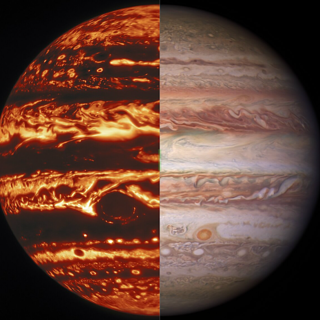 New findings from NASA’s Juno probe orbiting Jupiter provide a fuller picture of how the planet’s distinctive and colorful atmospheric features offer clues about the unseen processes below its clouds.
New findings from NASA’s Juno probe orbiting Jupiter provide a fuller picture of how the planet’s distinctive and colorful atmospheric features offer clues about the unseen processes below its clouds. DoD space agency changes course on satellite procurement in wake of Maxar’s protest
Thursday, 28 October 2021 17:16
In response to a protest filed by Maxar Technologies, the Defense Department’s Space Development Agency is canceling a solicitation issued Aug. 30 seeking bids for 144 satellites and will start over with a new procurement.
Hyten blasts ‘unbelievably’ slow DoD bureaucracy as China advances space weapons
Thursday, 28 October 2021 16:46
Vice Chairman of the Joint Chiefs of Staff Gen. John Hyten warned that bureaucratic inertia and fear of failing are thwarting innovation in the Department of Defense while China continues to roll out new military and space technologies.
Alpha Mission Overview
Thursday, 28 October 2021 15:00 Video:
00:03:00
Video:
00:03:00
ESA astronaut Thomas Pesquet from France began Alpha - his second mission to the International Space Station - on 23 April 2021. Launched from Cape Canaveral in Florida, USA, on the second operational flight of SpaceX Crew Dragon, he has now spent around six months in orbit on mission Alpha. In addition to science experiments, he has taken part in four spacewalks and countless scientific investigations. On 4 October Thomas became the fourth European International Space Station Commander. He is now the ESA astronaut with the most total time spent in space and on spacewalks.
Solar wing jammed on NASA spacecraft chasing asteroids
Thursday, 28 October 2021 14:48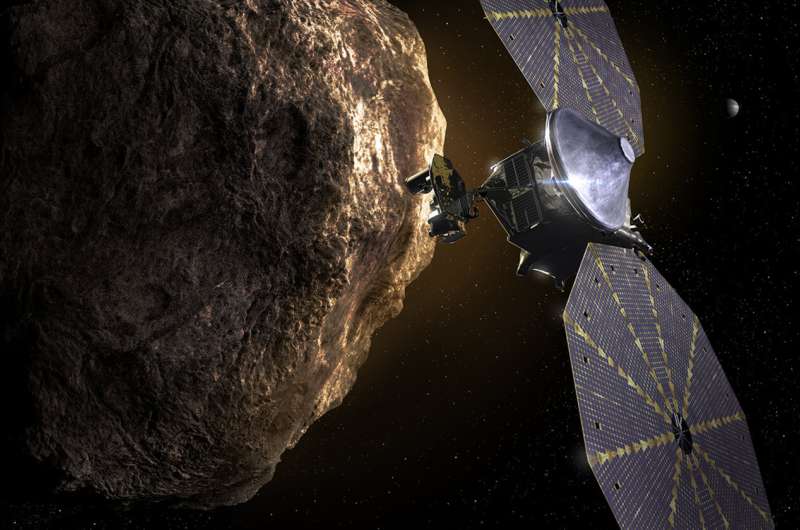
A Mars colony could be a hydrogen factory, providing propellant for the inner solar system
Thursday, 28 October 2021 14:41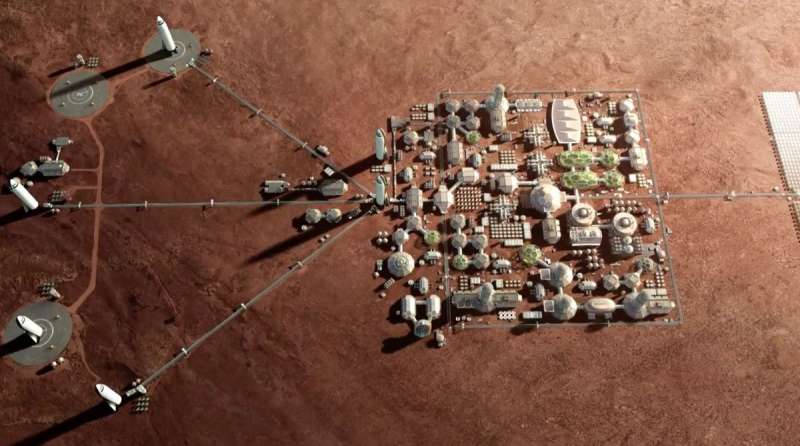
There are lots of potential uses for a Mars colony. It could be a research outpost, mining colony, or even a possible second home if something happens to go drastically wrong on our first one. But it could also be a potential source of what is sure to be one of the most valuable elements in the space economy—hydrogen.
A new paper from Dr. Mikhail Shubov at the University of Massachusetts Lowell discusses just such an eventuality. Hydrogen is useful in myriad applications. From creating water to exploding as rocket fuel, the most abundant element in the universe sure has many uses. The problem is it's relatively hard to get access to in the broader solar system.
There is plenty of it in Jupiter or even the sun, but extracting the material from those enormous gravity wells is not particularly cost-effective. Smaller orbital bodies, such as asteroids, have some water that could be used as a hydrogen source, but they are not large enough to provide all of the solar system's needs.
Op-Ed | To shore up U.S. space dominance, Biden administration must boost Japan-U.S. alliance
Thursday, 28 October 2021 14:01
Recent reports that China has tested a space-based, nuclear-capable hypersonic missile underscore the need for the Biden administration to take a number of steps to strengthen a Japan-U.S. alliance.
Image: Lunar lander in Dubai
Thursday, 28 October 2021 13:03
This mockup of ESA's European Lunar Logistics Lander (EL3) is currently on display at the International Astronautical Congress in Dubai.
The versatile EL3 will be used to land cargo on the lunar surface in support of crewed expeditions as well as to host science payloads, potentially enabling sample returns as well.
This EL3 Landing and Descent Element mockup was created for ESA by startup Spartan Space in France. In practice this segment will be attached to a payload-hauling Cargo Platform Element, the subject of a study by ESA's Concurrent Design Facility (CDF).
CASIS and Estée Lauder seek microgravity research on plastic alternatives
Thursday, 28 October 2021 13:01
The Center for the Advancement of Science in Space (CASIS) announced plans Oct. 28 to work with multinational corporation Estée Lauder to solicit microgravity projects aimed at reducing plastics waste.
A call for a methodical approach to identifying life beyond Earth
Thursday, 28 October 2021 12:17
A team of space scientists at NASA has published a Perspective piece in the journal Nature calling for the establishment of a methodical approach to identifying life beyond Earth. In their paper, the group suggests the space science community begin using a "confidence of life detection" (CoLD) scale, similar in some respects to others used in the science community, such as the TRL scale NASA uses to chart the readiness of new technology to be used on missions.
Noting that science, technology and space exploration efforts have led humanity to the point that it might be possible to find evidence of life on Mars or elsewhere—and further noting that in the past, discoveries surrounding the possibility of life in other places, most often on Mars, has led to widespread speculation and often criticism of those reporting the evidence—the authors suggest a new approach may be needed. They suggest the adoption of the CoLD scale and outline its seven levels.
The first level would be assigned if detection of a biosignature suggested life might have been found. That would kick off the second level, which would involve ruling out other factors such as contamination.
NASA to Host Briefing on Webb Telescope Engineering, Deployments
Thursday, 28 October 2021 12:14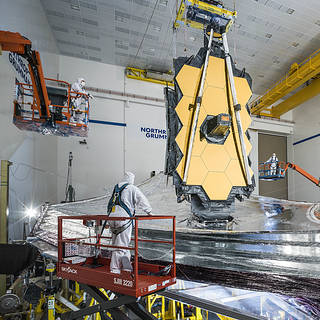 NASA will hold a virtual media briefing 11 a.m. EDT Tuesday, Nov. 2, to discuss the engineering of the James Webb Space Telescope, the world’s largest and most powerful space science telescope.
NASA will hold a virtual media briefing 11 a.m. EDT Tuesday, Nov. 2, to discuss the engineering of the James Webb Space Telescope, the world’s largest and most powerful space science telescope. JWST launch preparations on track
Thursday, 28 October 2021 08:47
The success of the most recent Ariane 5 launch has allowed preparations for the launch of NASA’s James Webb Space Telescope to move into the home stretch, officials said Oct. 27.
Towards the detection of the nanohertz gravitational-wave background
Thursday, 28 October 2021 07:53 The European Pulsar Timing Array (EPTA) is a scientific collaboration bringing together teams of astronomers around the largest European radio telescopes, as well as groups specialized in data analysis and modelling of gravitational-wave (GW) signals. It has published a detailed analysis of a candidate signal for the since-long sought gravitational-wave background (GWB) due to in-spiraling super
The European Pulsar Timing Array (EPTA) is a scientific collaboration bringing together teams of astronomers around the largest European radio telescopes, as well as groups specialized in data analysis and modelling of gravitational-wave (GW) signals. It has published a detailed analysis of a candidate signal for the since-long sought gravitational-wave background (GWB) due to in-spiraling super 
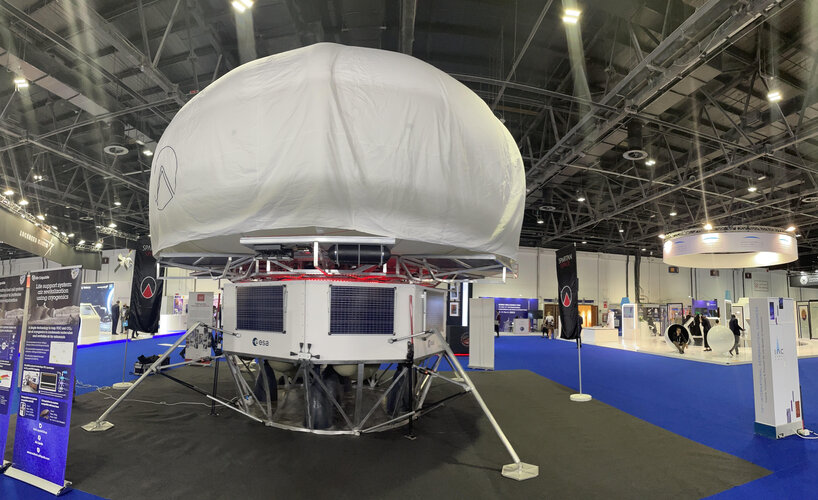 Image:
Lunar Lander in Dubai
Image:
Lunar Lander in Dubai